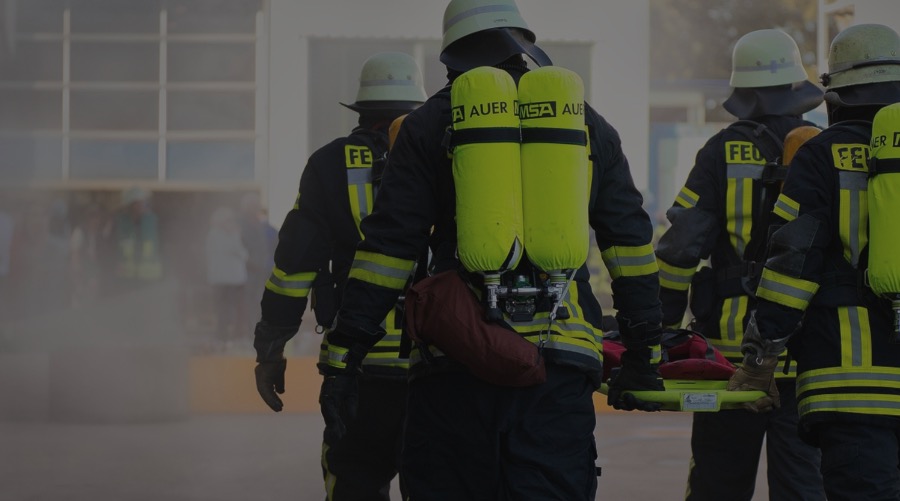
Director general of GCF, Lars Nielsen, and TCCA technical forum chair, Harald Ludwig, discuss the importance of the GCF Certification Programme, and why Critical Communications World is instrumental in industry collaboration
The GCF Certification Programme is seeing increased support from the industry. Could you tell us what this means for the sector and what implications it might have for the market going forward?
Lars Nielsen: Absolutely. As the director general of GCF, I'm excited to report that we're seeing a significant uptake in the number of mission-critical operators who are joining. This growth is somewhat ahead of our projections, which is a fantastic position to be in.
It's not just the operators either - we're also seeing a surge in support from the test industry. More test equipment vendors are getting involved in mission-critical certification, which is a strong indicator of a burgeoning market.
Kevin Graham, the CEO of TCCA, speculated that there could be as many as 100 million mission-critical devices worldwide. While that's just a fraction of consumer devices, it's a substantial market in its own right.
Why is this programme so important, and how does it benefit national mission-critical broadband operators?
Harald Ludwig: The significance of the programme can't be overstated. Most of the industry members or operators now joining GCF have traditionally operated narrowband TETRA systems.
They're well-versed in the advantages of a certification scheme, having seen its benefits for over 25 years. As they shift to broadband products, they're looking for the same level of assurance that certification provides.
Becoming a GCF member signals that they view broadband certification as essential. It should also be a sign for vendors to certify their products, as operators will require this in their tenders. Certified products ensure interoperability and compliance with standards, which is crucial for seamless operation, especially in cross-border collaborations or multi-agency responses.
Lars Nielsen: To add to Harald's point, we're expecting to have more than 40 device and app vendors as GCF members this year. Many of them have traditionally produced consumer market products, but a significant portion will also cater to the mission-critical market.
The broadband solution is built on existing technologies that have been in use for years, making it more accessible and likely to be adopted more widely than narrowband. This means that in a country where different emergency services may have used unique communication solutions, they will eventually all use the same technology and be able to communicate with each other when needed.
Can you share which other European organisations are in the process of joining the GCF?
Lars Nielsen: Certainly. At Critical Communications World, we're expecting to welcome the fourth mission-critical operator, primarily from the Nordic countries and Western Europe. Looking ahead to the second half of the year, we anticipate additional members from these regions, and possibly one from Eastern Europe.
There's also a high level of interest from North America and Southeast Asia, which is encouraging. It's not just a European initiative. GCF has a truly international scope.
How does Critical Communications World aid in this coordination effort?
Harald Ludwig: Critical Communications World is instrumental in this process. It's the one event each year where the entire industry converges—from the Americas, Asia, and beyond. All the key stakeholders, whether they're from the operational side, the vendor community, or the test industry, are present.
It's a critical platform for informing people about what's happening in GCF, particularly regarding certification and its importance. It's also an opportunity to advocate for product certification and to request certificates, helping to spread the message far and wide.
Lars Nielsen: And it's not just about spreading the message. The event has evolved into a forum for discussing what needs to be covered by certification initially and what should come next. It's become a thriving ecosystem that's an asset to the entire mission-critical communications industry.
For example, in the US, communication solutions are often decided at the county level, which can lead to a patchwork of systems. With mission-critical broadband, if all devices are certified to meet standards, we know they'll be able to communicate with each other, which is essential for coordinated responses.
Could you give us an example of how this coordination benefits national mission-critical broadband operators?
Lars Nielsen: A great example is the collaboration between the Danish and German border police. Currently, they rely on personal cell phones to communicate across the border. With mission-critical broadband set up correctly, they could simply join a communication group and talk directly with each other. It's a simple change that could make operations more efficient and, ultimately, safer.
Harald Ludwig: Certified products are a clear benefit for mission-critical broadband operators. They're careful not to introduce non-standard or proprietary solutions into their systems, which could lead to compatibility issues.
When first responders from different countries come to assist in major incidents, having standards-compliant equipment means they can use their gear in the host country's system.
Can you indicate which other European organisations are in the process of joining GCF?
Lars Nielsen: While I can't disclose all the details, as discussed we expect more members from the Nordic countries and Western Europe in the second half of the year, and possibly one from Eastern Europe.
How long has GCF been participating in Critical Communications World, and how has that history contributed to the programme's success?
Harald Ludwig: GCF's involvement with Critical Communications World spans over six years now. Our participation began before Kuala Lumpur in 2019. Over the years, the focus has shifted from whether certification was necessary to a unanimous agreement on its importance.
We're now concentrating on defining the initial certification requirements and planning for the future. It's become a thriving ecosystem that's an asset to the entire mission-critical communications industry.
